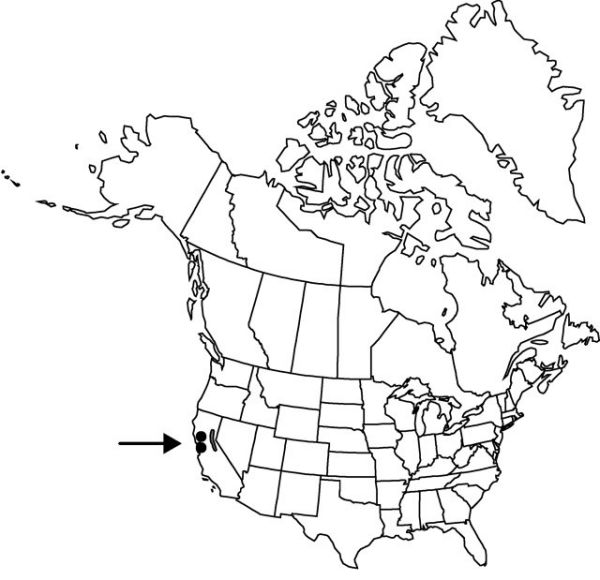Difference between revisions of "Brodiaea appendiculata"
Madroño 4: 130, fig. 1. 1937.
FNA>Volume Importer |
FNA>Volume Importer |
||
| Line 47: | Line 47: | ||
|publication year=1937 | |publication year=1937 | ||
|special status= | |special status= | ||
| − | |source xml=https://jpend@bitbucket.org/aafc-mbb/fna-data-curation.git/src/ | + | |source xml=https://jpend@bitbucket.org/aafc-mbb/fna-data-curation.git/src/f6b125a955440c0872999024f038d74684f65921/coarse_grained_fna_xml/V26/V26_642.xml |
|genus=Brodiaea | |genus=Brodiaea | ||
|species=Brodiaea appendiculata | |species=Brodiaea appendiculata | ||
Revision as of 19:33, 24 September 2019
Scape 10–45 cm, stout. Flowers 24–38 mm; perianth violet purple, tube cylindrical, 8–12 mm, translucent, splitting in fruit, lobes ascending, recurved distally, 15–22 mm, usually less than twice length of tube; filaments 4–7 mm, base not triangular, with 2 threadlike, forked appendages; anthers obcordate, 3–6 mm, apex hooked; staminodia erect, usually white, narrowly linear, 8–15 mm, margins 1/2 involute, wavy, apex rounded; ovary 5–6 mm; style 9–12 mm; pedicel 4–10 cm. 2n = 12.
Phenology: Flowering spring (Apr–May).
Habitat: Grasslands, open woodlands, gravelly clay soils
Elevation: 0–600 m
Discussion
This uncommon species is found at low altitudes in the Sierra foothills of central and northern California, usually in stony, red clay soils that become baked very hard during the flowering season. It is rare or extirpated from coast-range foothills.
Selected References
None.
